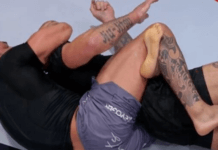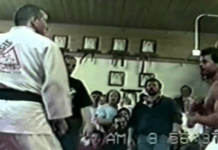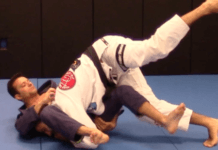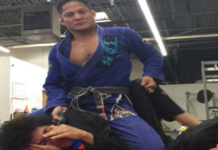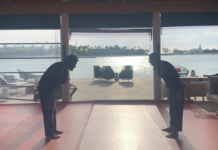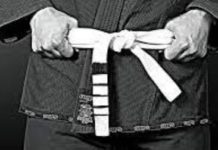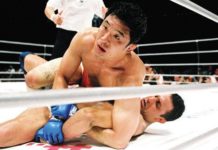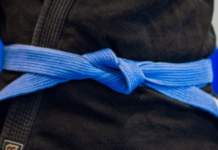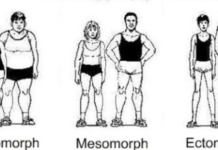One of the problemes many grapplers face is sore and painful fingers. This problem is most noticeable in people who train in the gi, especially people who use Gi-dependent styles of the guard like spider guard. Doing thing repeatedly will cause some effect on your body. To ensure we can roll for longest as we can certain precautions should be taken. Lern more on how to prevent Finger Pain in BJJ.
How to Prevent Finger Pain in BJJ
The main concern for many recreational BJJ practitioners is losing finger function due to tear and wear of finger joints. In the section below, I will give some tips on how to prevent finger pain that worked for me and that will surely reduce pain or prevent it completely.
Keenan Cornelius on Facebook spoke about his fingers :
“Coming up on a decade of Jiu-Jitsu, these hands have taken a beating. Would I say I’ve lost about 20% of the mobility in my fingers. I can’t make a closed fist anymore which has forced me to use Bas Rutten open palm self defense strikes when things go sour in the streetz. I spend about 60 dollars a year in tape (buying in bulk) multiple sprains, an evulsion fracture and countless torn knuckles. I’m proud of what they have become, gnarled claws from 10 years of choking and gripping and grasping. Here’s to the next decade of mangled digits.“
Finger taping: how to tape your fingers for BJJ?
You can see many BJJ practitioner taping there fingers and it’s for a good reason. This is a great method to protect your finger and its first step you should do to be pain-free. Check out the best finger tapes for BJJ HERE. In the video below you can see how to tape your fingers for BJJ explained by Keenan Cornelius:
Finger stretching exercise
Like every other part of your body fingers should be a stretch after your BJJ practice. Below I will mention few simple finger stretching exercises that will help you reduce pain and increase the range of motion.
1) Make a Fist
Simple hand and finger exercise that will strengthen your fingers, increase the range of motion and give you pain relief.
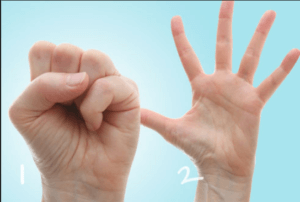
- Make a fist. Try not to squeeze to hard
- Hold for 30 seconds
- Release fist and spread your fingers wide
- Repeat the process for each fist 3 times
2) Claw stretch
This exercise improves your finger mobility
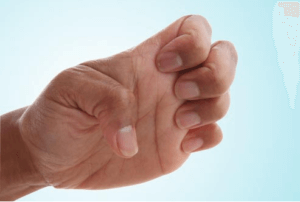
- Bend your fingertips to touch the base of each finger joint. Your fist should look like a claw
- Hold claw for 30 seconds
- Repeat 3 times for each hand
3) Finger stretch
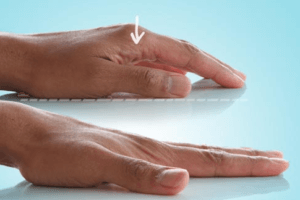
- Put your hand on the mat or any flat surface
- Straighten your finger against the surface
- Hold for 30 seconds
- Repeat 3 times for each hand
For the more detailed guide about finger stretching exercise click on this LINK
Griping to hard and not knowing when to release a grip
Most finger injuries happen in the moment when an opponent is trying to break your grip. Most crucial thing is to know when to release and when to hold grip because keeping grips at all costs is what will damage your fingers. If you see that your opponent will break your grip it is better to release grip and change position.
This is the case, especially where your opponent is using his legs to break your grip. Arm vs leg is battle you cant win and no matter how much you hold eventually you will lose.
Changing to no-gi or playing Less Grip-Dependent Guards
Using grip dependent styles like collar and sleeve, spider guard or heavy sleeve controlling close guard will for sure make your fingers sore. The solution for this problem is to try to use more techniques that are less grip dependent. Change your style to be more similar to “no-gi game” at least until your fingers get better.
Doing more no-gi can be a great way to train while your fingers rest. Also, this is an opportunity to improve your timing, dexterity, and learn techniques that are less grip dependent.
Check also:
- Rib injuries in Jiu-Jitsu and how to treat them
- Cauliflower Ear in Jiu-Jitsu How to Treat and Prevent it


